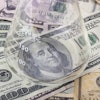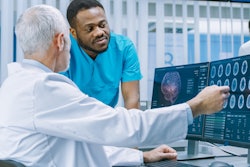
During a healthcare crisis like the COVID-19 pandemic, radiologists have much to offer both patients and colleagues, according to an editorial published August 6 in Diagnostic and Interventional Imaging.
And now is the time to step up and act strategically going forward, wrote a group led by Edmund Weisberg of Johns Hopkins in Baltimore.
"While ... the pandemic is receding in the U.S. after 17 months, it is worth considering how radiologists can further contribute to addressing what continues to be a global health crisis," the authors wrote. "Radiologists play an important role in diagnosis and management of patients affected by COVID-19 and perhaps can have greater input in communicating sound, healthy behavioral practices to the public regarding the current pandemic and likely future ones."
Weisberg and co-authors Drs. Linda Chu, Steven Rowe, and Elliot Fishman -- also at Johns Hopkins -- outlined what they have learned during the crisis in an effort to support their peers with coping with COVID-19 and in developing practical action as they face future pandemics.
Public health measures work. "[Appropriately] enacted public health measures work to stem the tides of epidemics and ... the rapid vaccine movement in the U.S. paid dividends with declining infection and death rates," the team wrote.
Vaccine inequity and hesitancy are real problems. "Global vaccine inequity ... looms as a major obstacle to inoculating enough of the world's population to render COVID-19 even a minor threat on the world stage ... and [vaccine] hesitancy, which is hardly new, poses an ever-present danger," the group noted.
Radiology's role goes beyond patient care. "We witness and experience aspects of life that can yield well-informed opinions on important issues, such as the roles of the pharmaceutical and insurance industries in public health, the implications of antibiotic resistance, the deleterious impact of racial disparities on public health, or the need for preparedness for global pandemics," the authors wrote. "[Actions] that we take to prevent people from becoming patients in the first place can be vital in contributing to public health."
Radiologists' influence can curb disease transmission. "Where you have an opportunity as a medical doctor -- on the airwaves, in journals, on Twitter -- use it," the team urged. "We can write letters to newspapers, online blogs and journals, as well as politicians with public health messaging [that supports] our comrades in [epidemiology and infectious disease]."
The bottom line is that radiologists and their medical colleagues are crucial to the effort to keep citizens healthy, according to the team.
"As we face a cascade of overlapping crises, we find public health squarely at the nexus," the authors wrote. "Now more than ever, we need the latest science, truth, honesty, and integrity to drown out the discordant din of mis- and disinformation. Health care workers, including radiologists, radiology nurses, and radiology technicians, are positioned to assist our colleagues in communicating life-saving information to the public."




















